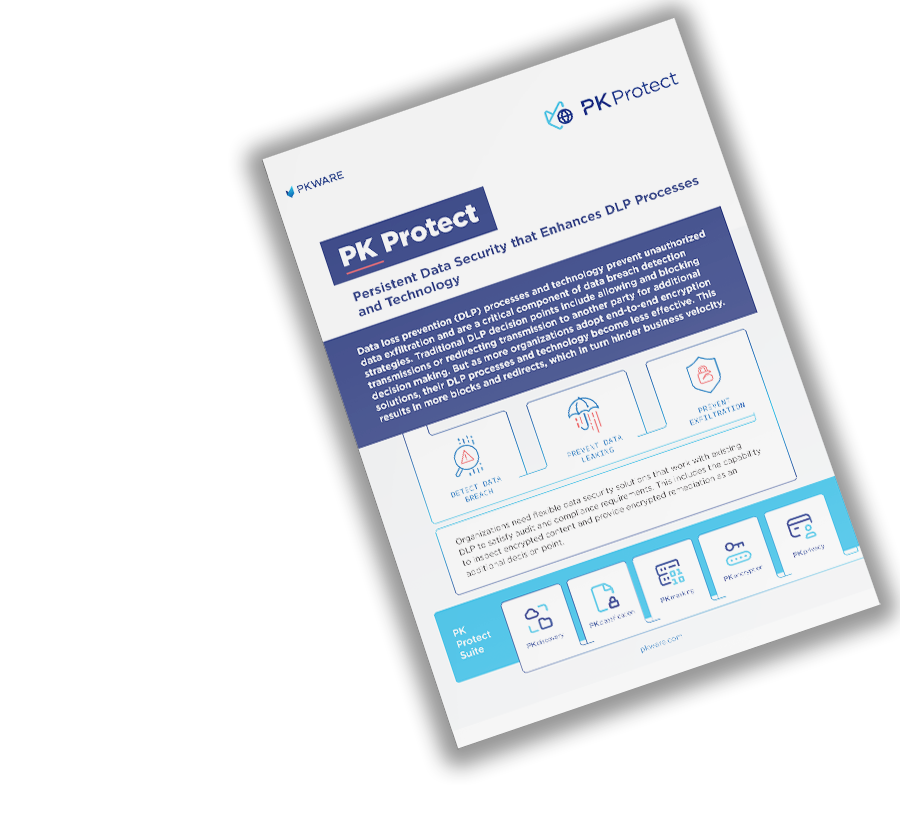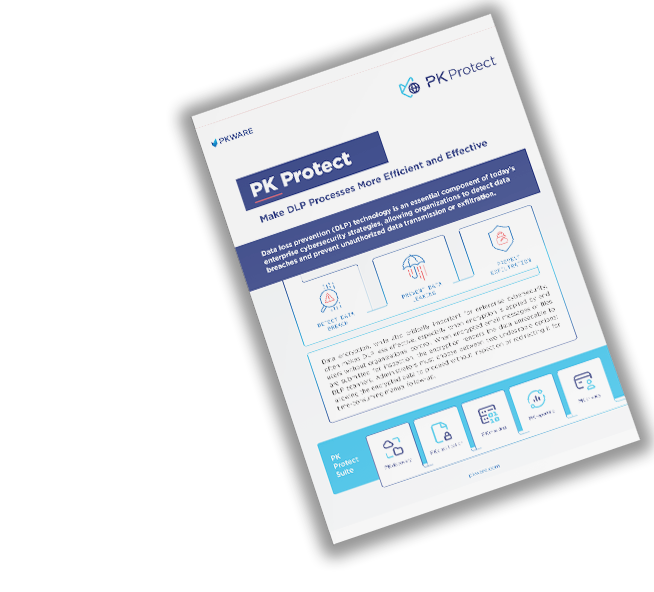DLP Enhancement
Extending DLP Protection
Data loss prevention (DLP) technology is an essential component of today’s cybersecurity strategies, allowing organizations to detect data breaches and prevent unauthorized data transmission or exfiltration by finding, monitoring, and blocking data leaving the network as the result of user action. But data encryption, while critically important for enterprise cybersecurity, often makes DLP less effective, especially when applied by end-users without organizational control, because encryption renders the data unreadable to DLP scanners.
Enhance DLP with Policy-Based Encryption
Give DLP Enhanced Visibility
Encryption often prevents DLP from inspecting data as it leaves an organization, while DLP can lack the ability to encrypt unprotected data according to policy. With company-controlled keys included in each encryption operation, PKWARE enables DLP scanners to decrypt content that has been encrypted elsewhere in the organization. Include policy keys within agents that decrypt data as required for DLP inspection.







